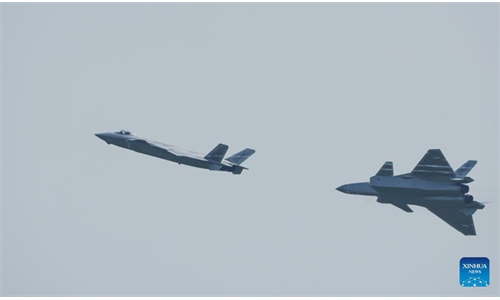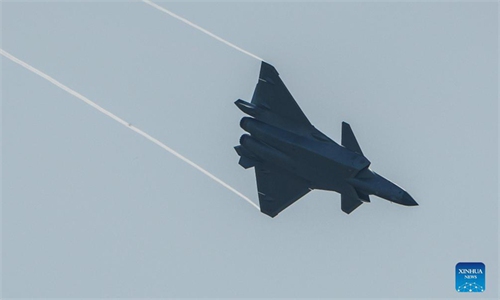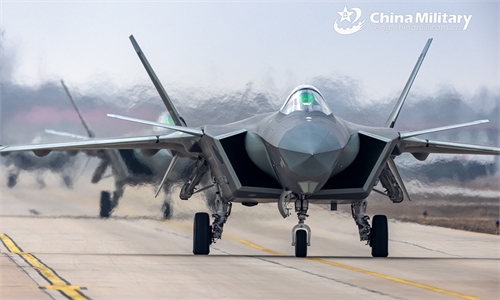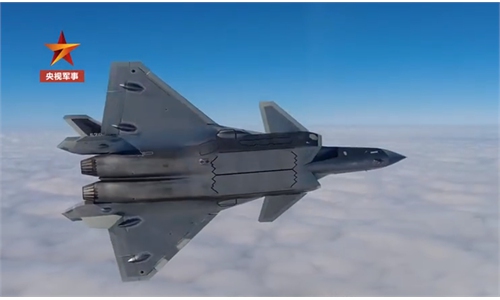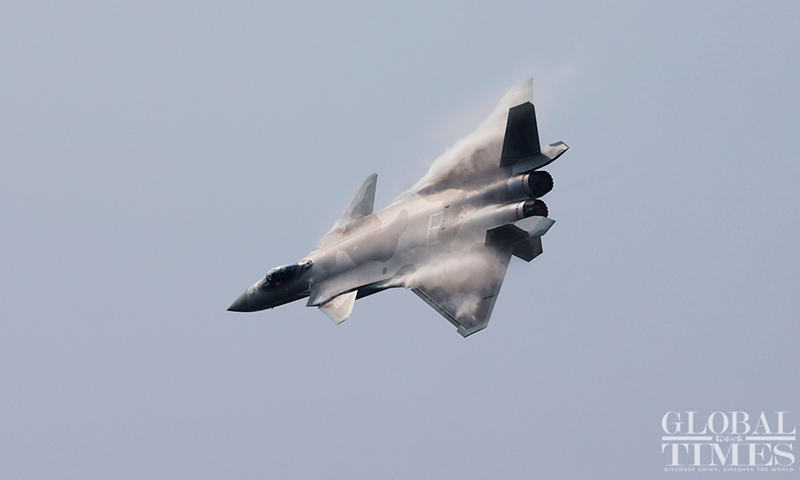
J-20 jets, China's most advanced stealth fighter jets powered by domestic engines, made their debut at the opening ceremony of the China Airshow 2021 in the host city Zhuhai, South China's Guangdong Province on Tuesday.Photo: Cui Meng/GT
With efforts including establishing a laboratory dedicated to research on aviation components, China is now capable of resolving complex problems of warplane engines, said a Chinese political advisor who delivered domestically developed engine technologies for the J-20, the country's most advanced stealth fighter jet.
China's technology gap with leading countries like the US in terms of jet engines has been narrowed, and advanced technologies such as higher thrust-weight ratio, vector thrust control and variable cycle are likely under development, analysts said on Wednesday.
China has gained full ability to independently develop engines for military aircraft - from designing to manufacturing, then from experimenting to test flights, Li Zhiqiang, a member of the National Committee of the Chinese People's Political Consultative Conference, said in a report by China Central Television (CCTV) on Tuesday.
Li, also the head of the Manufacturing Technology Institute of the state-owned Aviation Industry Corporation of China, which is the major contractor of warplanes of the Chinese People's Liberation Army, said that jet engines are the heart of aircraft, and China must be able to independently supply such engines, since importing them will inevitably limit the capabilities of Chinese warplanes.
Since the 1990s, Li has led researchers in developing advanced jet engines, building a dedicated laboratory to develop aviation components, with a focus on the hot forming and superplastic forming of titanium alloy, CCTV reported, noting that even the smallest component would need to undergo hundreds or thousands of tests.
In one case, a fan blade that took six years to develop broke after only 60 seconds, Li recalled, noting that despite the failure, the team searched for the problem and eventually solved it.
Their technologies, now mature, are widely used on Chinese warplanes including the J-20, the report said.
Two J-20 fighter jets equipped with domestically developed engines made their first flight performance at Airshow China 2021 in a move analysts said marked the end of the aircraft's reliance on imported engines and likely the start of the aircraft's mass production.
Thirty years ago, China's advanced weapon and equipment manufacturing lagged far behind developed countries, and China had to learn from whatever they were doing. But now, China does not need to look at others, as the country can realize whatever it wants to do, Li said.
People said in the past that China was 20 to 30 years behind leading countries like the US in terms of jet engine development, and this gap is now being narrowed, possibly to 10 to 15 years, Wang Ya'nan, chief editor of Aerospace Knowledge magazine, told the Global Times on Wednesday.
The more capabilities China gains, the more challenging it will be for the country to go further, because there is no known path to follow anymore, as all countries in this top tier are exploring, Wang said, noting that this also presents opportunities.
Some of the highly expected technologies, including engines with higher thrust-weight ratio, engines capable of vector thrust control and variable cycle engines, are likely under development, Wang said.

